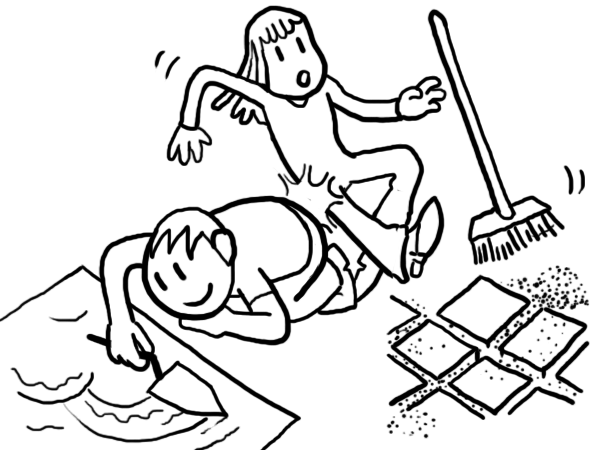Paving, A.K.A. Flatwork
After the vertical elements are built, any areas to be paved with poured concrete are next. Flatwork is saved for after vertical structures because the heavy machinery used for construction can damage pavement, making it settle unevenly, ruining the finish, or even cracking and breaking it.
Concrete is typically poured with a slight slope. This helps with drainage so it doesn’t end up with a bunch of puddles during a rain event. After the concrete is poured, it is screed, leveled, edged, and finished according to the design specifications. Other paved surfaces are poured at this point too: asphalt, or permeable paving which includes porous concrete or porous asphalt. Permeable paving is a form of LID (low impact development).
Specialty Paving
Specialty paving is paving that isn’t poured, and is made from laying down solid units. This includes bricks, concrete pavers, flagstone, etc. Constructing with pavers is more time-intensive than pouring, so it is usually the last step before planting and final touches.
Delivery vehicles should be considered before bringing in the pavers, since these vehicles are heavy and can damage areas that have already been paved. Once this paving has started, it should be off-limits until it has been set with mortar, sand, or soil. Until then, any movement over the pavers (especially by vehicles) can cause them to shift.
Poured Rubber
Poured rubber safety surfacing is a great durable material for play environments. This poured in place material is comprised of two layers: a cushion layer made of clean, recycled tire rubber; and a decorative wear course layer comprised of fine virgin EPDM or TPV granules. The cushion layer thickness is customized on site, based on the fall height requirements that correspond with selected equipment. It can be installed over asphalt, concrete, or compacted sub-base aggregate. Once installed, the poured rubber will require 72 hours to cure.
